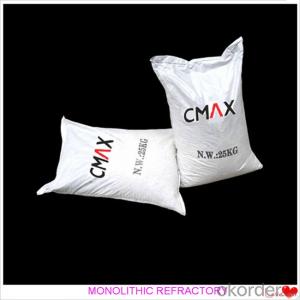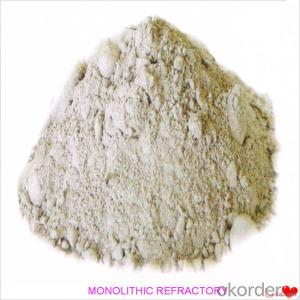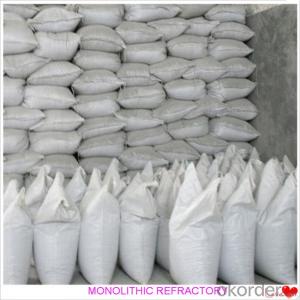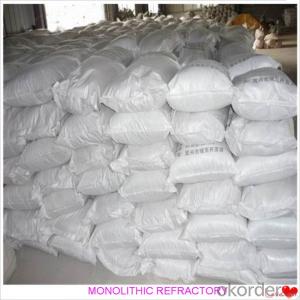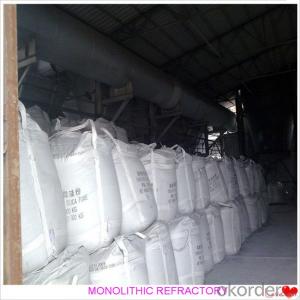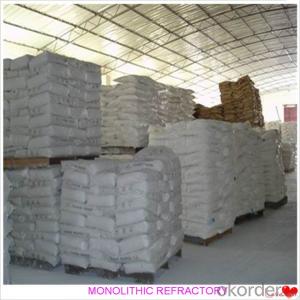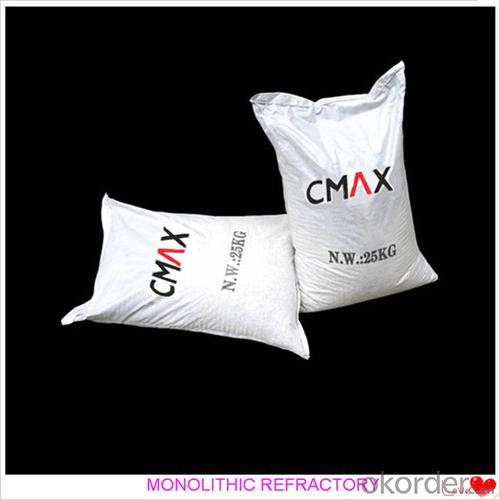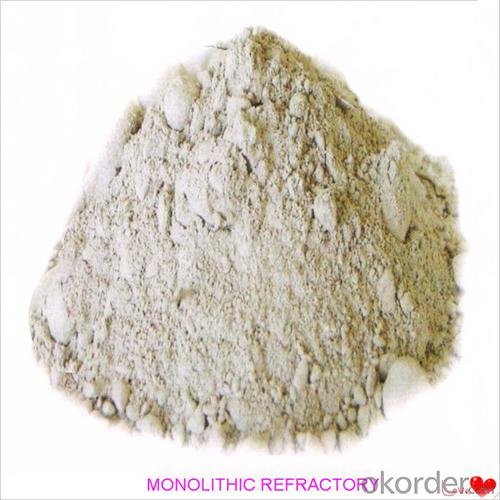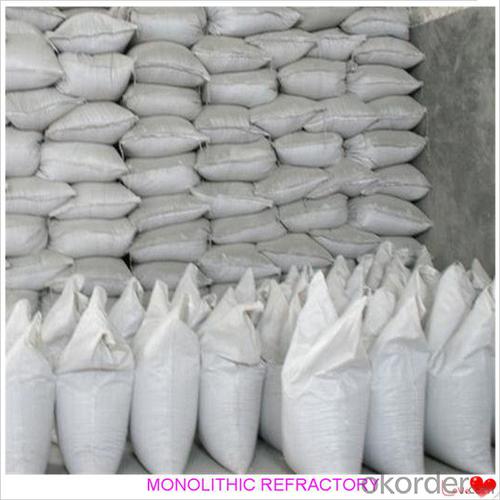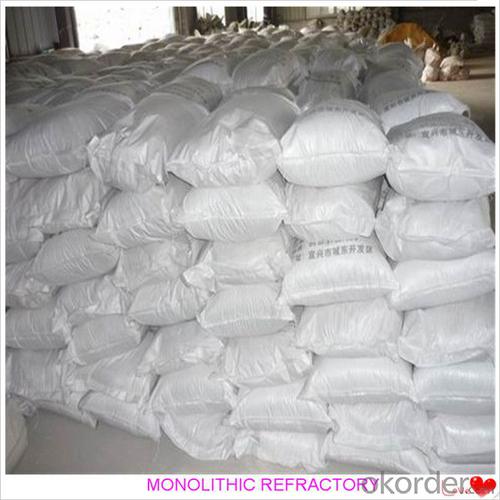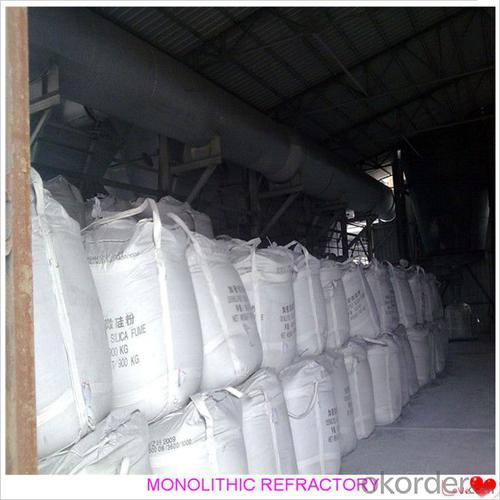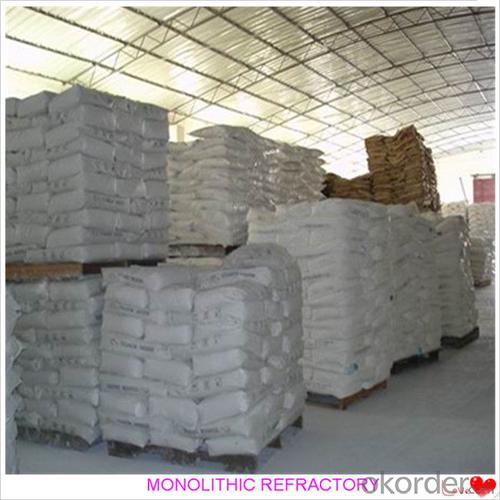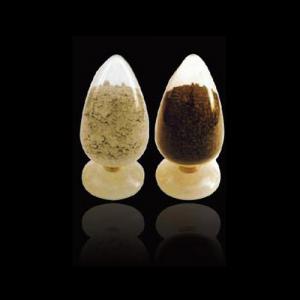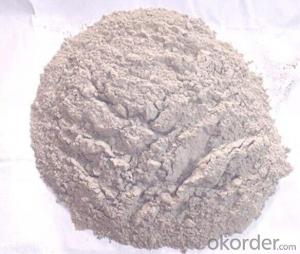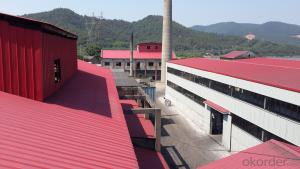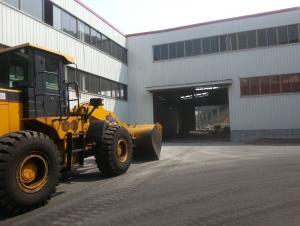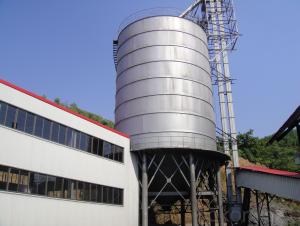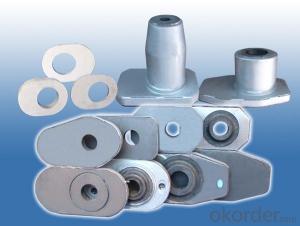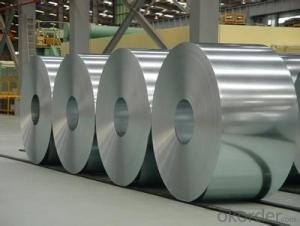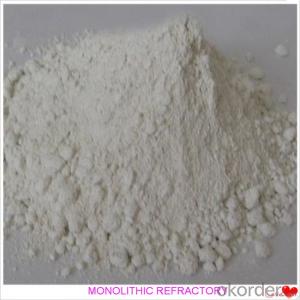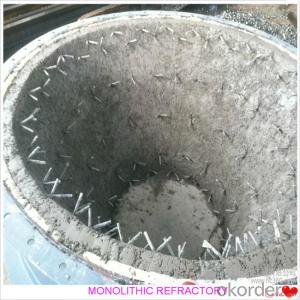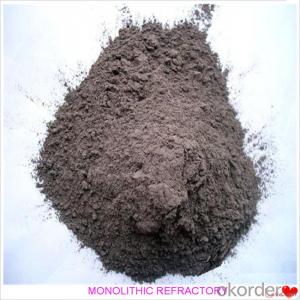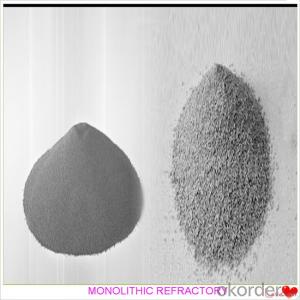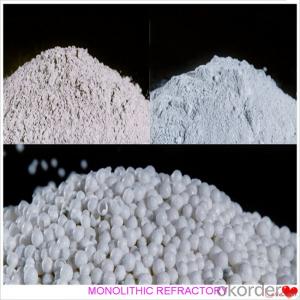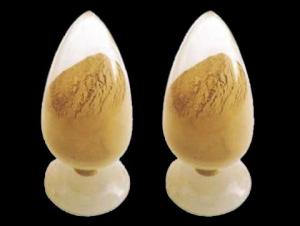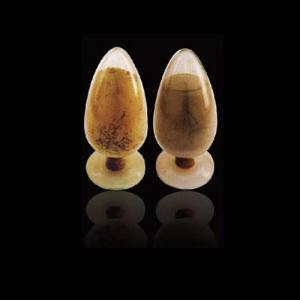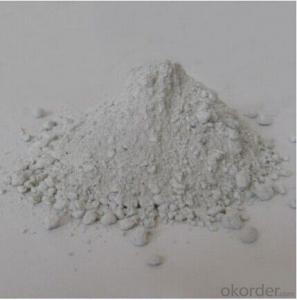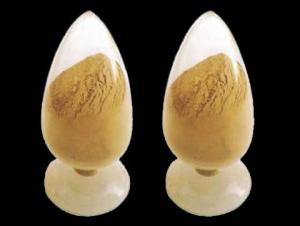Monolithic Refractories for Iron and Steel Industry - Mullite Castable for Fireside and Industrial Furnace
- Loading Port:
- China main port
- Payment Terms:
- TT OR LC
- Min Order Qty:
- 1000 kg
- Supply Capability:
- 3000000 kg/month
OKorder Service Pledge
OKorder Financial Service
You Might Also Like
Mullite Castable For Fireplace and Industrial Furnace in Iron and Steel
Product Description:
Mullite castable is manufactured according to international standards. The product is famous for its excellent abrasion resistance and low thermal conductivity. Further, these can be provided in different specifications as required by the clients. The Mullite castables are used high purity raw materials and additives as the main material, and made of under superfine powder adding technology.
Product Advantages:
The material has excellent structural stability and air tightness, and has high physical and chemical properties, also has a fine working ability.They should be used with the same material products.
Product Applications:
For feature of Mullite castable, they have excellent abrasion resistance, thermal shock resistance, high-temperature resistance, anti-corrode and have high intensity.
Designed for refractory lining of blast furnace iron and slag runners, skimmers and soon
They can be used in troughs of small and mid size BFs and in all positions of the troughs where fast tapping is required.
Product Specifications:
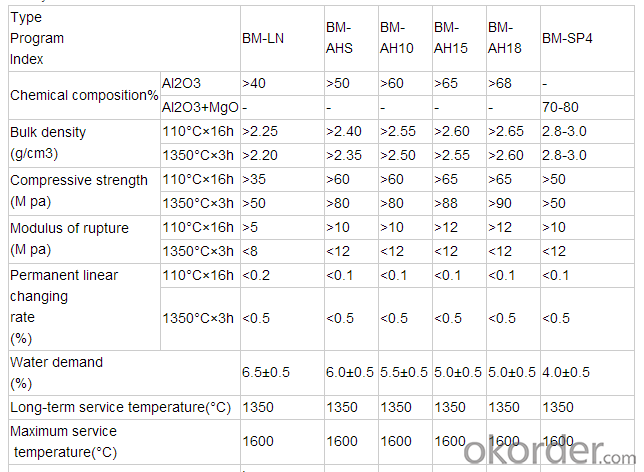
FAQ:
1. How you can control your quality?
For each production processing, we have complete QC system for the chemical composition
and Physical properties. After production, all the goods will be tested, and the quality certificate
will be shipped along with goods.
2. What's your delivery time?
It usually needs about 20days- 45 days after receiving the deposit.
3. Do you provide free samples?
Yes, we can provide a free sample for testing, If we have sample in stock,
The quantity based on the material type, The buyer should bear all the shipping costs.
4. What's your payment terms?
We can accept 30% deposit, 70% balance before shipment for ordrs over $ 2000.
5. Can we visit your Company?
Yes, certainly. You are very welcome to China and we will be honored to have a customer and friend.
Product Picture:

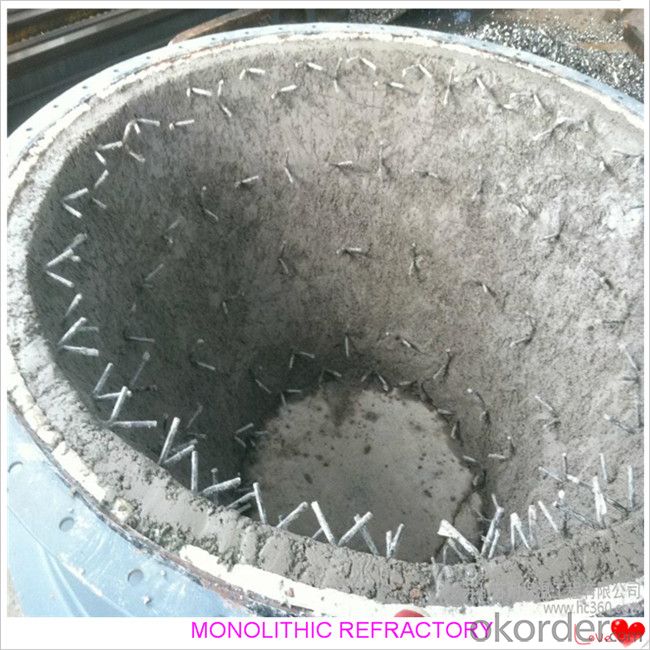
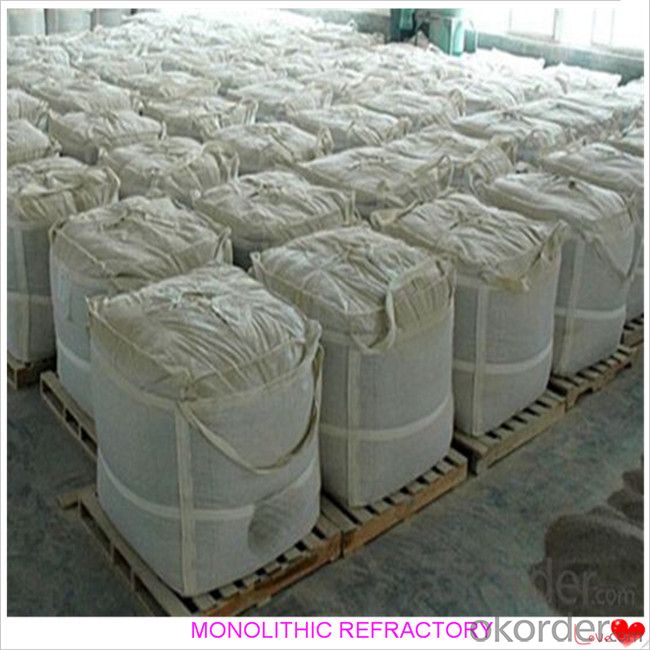
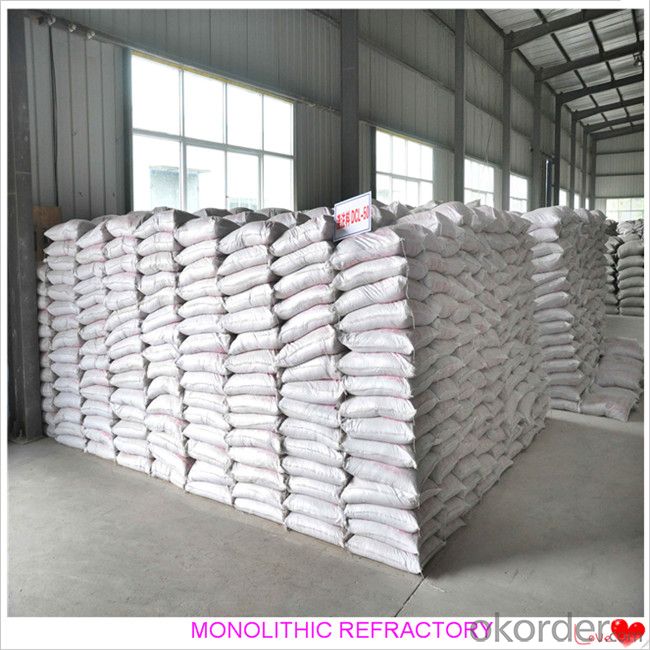
- Q: How do monolithic refractories withstand the chemical attacks in aluminum furnace applications?
- Monolithic refractories are able to withstand chemical attacks in aluminum furnace applications due to their unique composition and properties. These materials are designed to have high resistance to the corrosive effects of molten aluminum and other chemicals present in the furnace environment. Firstly, monolithic refractories are made from a combination of different minerals, such as alumina, silicon carbide, and zirconia, which have high melting points and excellent chemical stability. These minerals act as a barrier between the corrosive substances and the underlying structure, preventing them from penetrating or damaging the refractory lining. Additionally, monolithic refractories are typically formulated with high levels of alumina, which provides them with exceptional resistance to chemical attacks. Alumina has a strong affinity for oxygen, forming a stable oxide layer on the surface of the refractory material, acting as a protective barrier against corrosive elements. This oxide layer also helps to reduce the rate of penetration of corrosive substances into the refractory lining. Moreover, monolithic refractories are often designed with a dense microstructure and low porosity. This ensures that there are fewer pathways for the corrosive substances to penetrate and attack the refractory material. The denser the material, the less susceptible it is to chemical attacks. Furthermore, monolithic refractories can be further enhanced by adding additives or binders that improve their resistance to chemical attacks. These additives can include various organic or inorganic materials that provide additional protection against corrosive substances. Overall, monolithic refractories are specifically engineered to withstand the harsh conditions of aluminum furnace applications. Their unique composition, high alumina content, dense microstructure, and resistance-enhancing additives all contribute to their ability to withstand chemical attacks and prolong the lifespan of the refractory lining in aluminum furnaces.
- Q: How do monolithic refractories impact the overall productivity of iron and steel operations?
- The overall productivity of iron and steel operations is greatly enhanced by monolithic refractories. These refractories are specifically designed to withstand extreme temperatures, chemical reactions, and mechanical stress that occur during production. One important way that monolithic refractories impact productivity is by reducing downtime and increasing operational efficiency. These refractories have high thermal conductivity and are resistant to thermal shock, allowing them to maintain stable temperatures within the furnace. This prevents sudden temperature fluctuations that can lead to equipment failure and production delays. As a result, the production process can continue uninterrupted, leading to increased productivity. Furthermore, monolithic refractories offer superior corrosion resistance, preventing the erosion and degradation of furnace linings. This resistance to chemical attacks from molten metals and slag helps prolong the lifespan of the refractory lining, reducing the need for repairs and replacements. This leads to less downtime and higher productivity for iron and steel operations. Additionally, monolithic refractories enable faster installation and repair processes compared to traditional brick refractories. They have a fluid-like consistency that makes application and shaping easy, resulting in shorter installation and curing times. This quick turnaround time minimizes production interruptions during repairs or maintenance, further increasing overall productivity. Moreover, the use of monolithic refractories can optimize energy consumption in iron and steel operations. Their excellent insulation properties help retain heat within the furnace, reducing heat loss and energy waste. This improves energy efficiency and leads to cost savings, ultimately contributing to increased productivity and profitability. In conclusion, monolithic refractories have a significant impact on the productivity of iron and steel operations. Their ability to withstand extreme conditions, reduce downtime, resist corrosion, facilitate quick repairs, and optimize energy consumption all contribute to improved efficiency and productivity in the industry.
- Q: How do monolithic refractories contribute to the overall efficiency of ladle slagging operations?
- Monolithic refractories play a crucial role in improving the overall efficiency of ladle slagging operations. Ladle slagging is a process that involves the removal of impurities from molten metal in a ladle before it is poured into molds or further processed. One of the key contributions of monolithic refractories is their ability to withstand high temperatures, which is essential in ladle slagging operations. The refractory lining of the ladle needs to be able to endure the extreme heat generated by the molten metal and slag, as well as the chemical reactions occurring during the process. Monolithic refractories, with their high thermal stability, prevent the lining from cracking or deteriorating, thus ensuring the integrity of the ladle and maintaining its efficiency. Additionally, monolithic refractories offer excellent resistance to chemical erosion and corrosion. During the ladle slagging process, the molten metal and slag can contain various impurities and aggressive chemicals, such as sulfur, phosphorus, and other oxides. These substances can attack and degrade the lining of the ladle, compromising its efficiency. However, monolithic refractories are designed to resist these chemical attacks, thereby extending the lifespan of the ladle and reducing the need for frequent repairs or replacements. Moreover, monolithic refractories provide good thermal insulation properties. Ladle slagging operations require precise temperature control to ensure the desired chemical reactions and efficient removal of impurities. The thermal insulation offered by monolithic refractories helps to maintain a consistent temperature within the ladle, preventing heat loss and allowing for optimized slagging conditions. This insulation also minimizes energy consumption and improves the overall energy efficiency of the ladle slagging process. In conclusion, monolithic refractories contribute significantly to the overall efficiency of ladle slagging operations. Their ability to withstand high temperatures, resist chemical erosion, and provide thermal insulation ensures the integrity and longevity of the ladle. By reducing the need for frequent repairs and allowing for precise temperature control, monolithic refractories optimize the slagging process, leading to improved productivity and cost-effectiveness.
- Q: How do monolithic refractories withstand high temperatures in iron and steel production?
- Monolithic refractories are able to withstand high temperatures in iron and steel production due to their composition and unique properties. These refractories are made from a single, continuous material, which eliminates the need for joints or seams that could weaken under extreme heat. Additionally, they have high thermal conductivity and low thermal expansion, allowing them to effectively absorb and distribute the intense heat in the production process without cracking or breaking. Furthermore, monolithic refractories are highly resistant to chemical corrosion and erosion, which is crucial in the harsh environment of iron and steel production. Overall, the combination of these factors enables monolithic refractories to withstand the extreme temperatures involved in iron and steel production.
- Q: How are monolithic refractories installed and repaired in iron and steel plants?
- Monolithic refractories in iron and steel plants are typically installed through a process called gunning, where a specialized gunning machine is used to spray the refractory material onto the desired surface. The refractory material is mixed with water or a bonding agent to form a dense and durable lining. In terms of repairs, damaged or worn-out monolithic refractories are typically removed by mechanical means, such as jackhammers or pneumatic tools. The damaged area is then cleaned and prepared before new refractory material is applied using the gunning method. In some cases, patching materials may be used to repair smaller areas of damage. Overall, the installation and repair of monolithic refractories in iron and steel plants require skilled technicians and specialized equipment to ensure the optimum performance and longevity of the refractory lining.
- Q: How do monolithic refractories resist thermal shock in the iron and steel industry?
- Monolithic refractories are specifically designed to resist thermal shock in the iron and steel industry. This is primarily achieved through their unique composition and structure. Firstly, monolithic refractories are made from high-quality raw materials, such as alumina, magnesia, and silica, which have excellent thermal properties. These materials are carefully selected to provide a high melting point, low thermal conductivity, and good thermal expansion characteristics. Secondly, the manufacturing process of monolithic refractories involves precise control of the grain size distribution and the addition of bonding agents. This results in a dense and homogeneous structure, which enhances their resistance to thermal shock. The bonding agents also play a crucial role in enhancing the refractory's strength and integrity. Additionally, monolithic refractories are often formulated with additives that provide increased resistance to thermal shock. These additives can include zirconia, silicon carbide, or graphite, which improve the refractory's ability to withstand rapid temperature changes. Moreover, monolithic refractories are designed to have low porosity, reducing the penetration of molten metal or slag into the material. This helps to prevent the formation of cracks and spalling, which can occur due to thermal shock. Furthermore, monolithic refractories are often applied as a lining or coating on the surface of the furnace or other equipment. This allows them to form a protective barrier, reducing direct exposure to extreme temperatures and thermal cycling. Overall, the combination of high-quality raw materials, careful manufacturing processes, additives, low porosity, and proper application techniques make monolithic refractories highly resistant to thermal shock in the iron and steel industry. They can withstand rapid temperature changes, prevent cracks, and maintain their structural integrity, ensuring reliable and efficient operation of furnaces and other equipment in this demanding industry.
- Q: What are the common failure mechanisms of monolithic refractories?
- Common failure mechanisms of monolithic refractories include thermal spalling, chemical attack, erosion, and mechanical stress. Thermal spalling occurs when the refractory material is exposed to rapid temperature changes, leading to the cracking and breaking of the refractory lining. This can happen due to thermal shock, such as when a cold material is suddenly exposed to high temperatures, or when the refractory is subjected to cyclic heating and cooling. Chemical attack occurs when the refractory material comes into contact with aggressive chemicals or gases that can react with and degrade the refractory lining. This can lead to the formation of new compounds or the dissolution of the refractory material, weakening its structure and reducing its resistance to further chemical attack. Erosion is another common failure mechanism, especially in applications where the refractory lining is exposed to high-velocity gas or liquid flows. The abrasive action of the flowing medium can gradually wear away the refractory material, leading to thinning and eventual failure of the lining. Mechanical stress, such as thermal expansion or contraction mismatch, can also cause failure in monolithic refractories. When the refractory material is subjected to rapid temperature changes, differential expansion or contraction can occur, leading to the development of cracks and fractures in the lining. To mitigate these failure mechanisms, various techniques can be employed, such as proper material selection based on the specific operating conditions, careful design to minimize thermal gradients, use of protective coatings, and regular inspection and maintenance to identify and address any signs of failure or degradation.
- Q: How do monolithic refractories withstand thermal shock?
- Monolithic refractories possess unique properties and composition that enable them to endure thermal shock. Thermal shock occurs when there is a sudden alteration in temperature, leading to stress and potential damage to the refractory material. However, monolithic refractories are constructed to possess high resistance to thermal shock, and this is accomplished through various mechanisms. Firstly, the composition of monolithic refractories incorporates materials with low coefficients of thermal expansion. This implies that they undergo minimal alterations in size or volume when exposed to varying temperatures. This characteristic allows the refractory material to withstand thermal shock by minimizing the stress caused by temperature fluctuations. Secondly, monolithic refractories exhibit exceptional thermal conductivity. This quality enables them to efficiently transfer heat away from the hot regions, preventing localized overheating and diminishing the likelihood of thermal shock. The rapid dissipation of heat aids in maintaining a more even distribution of temperature within the refractory material, thereby reducing the chances of cracking or spalling. Furthermore, the binding agents employed in monolithic refractories play a vital role in enhancing their resistance to thermal shock. These binders provide strength to the refractory material and assist in preserving its integrity during thermal cycling. Additionally, the binders contribute to the refractory's ability to withstand thermal shock by reducing the permeability of the material, thus preventing the infiltration of hot gases or liquids that could cause damage. Moreover, the installation technique of monolithic refractories plays a significant role in their capacity to endure thermal shock. Typically, monolithic refractories are applied as a single, uninterrupted layer, eliminating the weak points such as joints and seams that exist in other refractory systems. This seamless installation method ensures superior resistance to thermal shock as there are no vulnerable points for cracks to propagate. In conclusion, monolithic refractories effectively withstand thermal shock through a combination of factors including their low coefficients of thermal expansion, high thermal conductivity, appropriate binding agents, and seamless installation techniques. These properties and design considerations enable monolithic refractories to proficiently handle rapid temperature changes and maintain their structural integrity, making them ideal for applications involving thermal cycling and extreme variations in temperature.
- Q: What are the main factors affecting the abrasion resistance of monolithic refractories?
- There are three key aspects that categorize the main factors influencing the abrasion resistance of monolithic refractories: material composition, microstructure, and service conditions. Firstly, the abrasion resistance of monolithic refractories is significantly determined by their material composition. The selection of raw materials, such as aggregates and binders, directly impacts the overall hardness, strength, and wear resistance of the refractories. For example, high-alumina refractories, which have a high proportion of alumina as their main component, demonstrate exceptional abrasion resistance due to the hardness and toughness of alumina. Conversely, refractories with a higher percentage of softer materials like clay or magnesia may exhibit lower abrasion resistance. Secondly, the microstructure of monolithic refractories plays a crucial role in their ability to endure abrasion. The arrangement and orientation of the aggregates, as well as the bond strength between the particles and the matrix, significantly contribute to their resistance against wear. An evenly distributed and interconnected network of aggregates can strengthen the refractories and enhance their resistance to abrasion. Additionally, a compact and well-sintered matrix can prevent abrasive particles from penetrating, thereby reducing wear. Lastly, the service conditions under which monolithic refractories operate are vital factors in determining their abrasion resistance. Variables such as temperature, atmosphere, and mechanical stress can greatly impact the wear behavior of refractories. High temperatures can cause thermal expansion and contraction, resulting in cracks and spalling, which accelerate abrasion. The presence of corrosive gases or chemicals can also deteriorate the microstructure of refractories, diminishing their wear resistance. Moreover, mechanical stress from impact or friction can lead to localized wear and damage the refractories. To conclude, the abrasion resistance of monolithic refractories is influenced by material composition, microstructure, and service conditions. By carefully selecting suitable raw materials, optimizing the microstructure, and considering specific service conditions, it is possible to enhance the abrasion resistance of monolithic refractories and improve their overall performance in high-wear applications.
- Q: How are monolithic refractories different from traditional refractory materials?
- There are several ways in which monolithic refractories differ from traditional refractory materials. Firstly, while traditional refractory materials are typically made from bricks, blocks, or tiles, monolithic refractories are made from a single continuous material. This means that they do not have any joints or seams, which can weaken traditional refractory structures. Secondly, installing monolithic refractories is much easier compared to traditional refractory materials. They can be easily shaped and applied on site, allowing for greater flexibility in design and construction. In contrast, traditional refractory materials require skilled labor and more time-consuming installation methods such as bricklaying. Additionally, monolithic refractories offer improved resistance to thermal shock. Because of their continuous structure, they can better withstand sudden changes in temperature without cracking or spalling. On the other hand, traditional refractory materials may be more susceptible to thermal shock damage. Another advantage of monolithic refractories is their ability to provide better insulation. They are often composed of lightweight aggregates or insulating fibers, which help to reduce heat loss and improve energy efficiency. Traditional refractory materials, while still capable of providing insulation, may not offer the same level of thermal efficiency. Lastly, monolithic refractories are more cost-effective. Their ease of installation, reduced labor requirements, and improved thermal performance contribute to lower overall project costs compared to traditional refractory materials. To sum up, monolithic refractories have a continuous structure, are easy to install, offer improved thermal shock resistance, provide better insulation properties, and are cost-effective. These characteristics make them the preferred choice in many industries that require high-temperature applications and thermal insulation.
Send your message to us
Monolithic Refractories for Iron and Steel Industry - Mullite Castable for Fireside and Industrial Furnace
- Loading Port:
- China main port
- Payment Terms:
- TT OR LC
- Min Order Qty:
- 1000 kg
- Supply Capability:
- 3000000 kg/month
OKorder Service Pledge
OKorder Financial Service
Similar products
Hot products
Hot Searches
Related keywords
